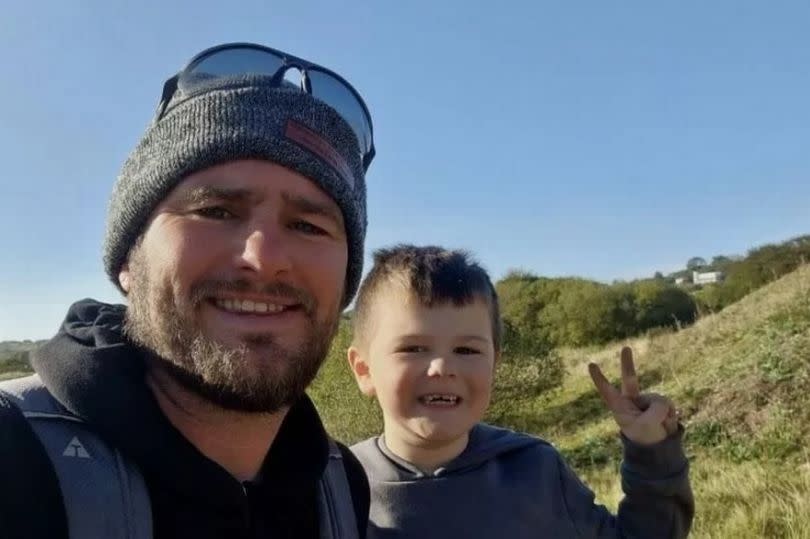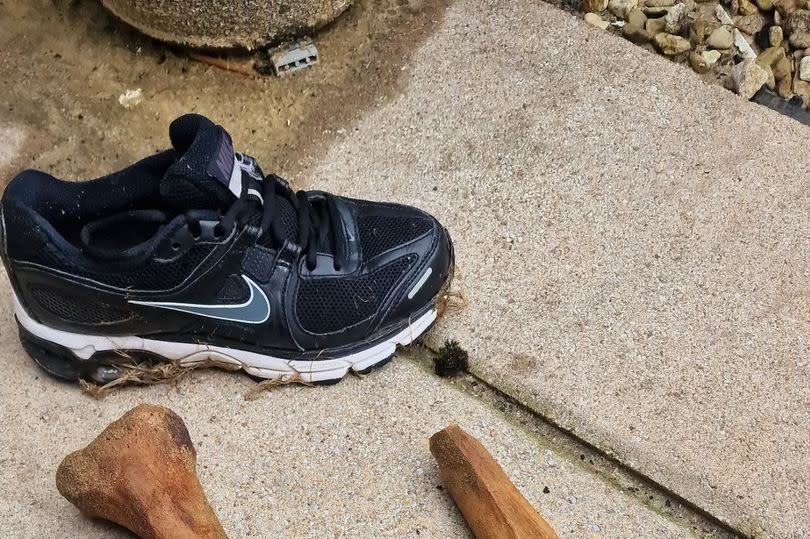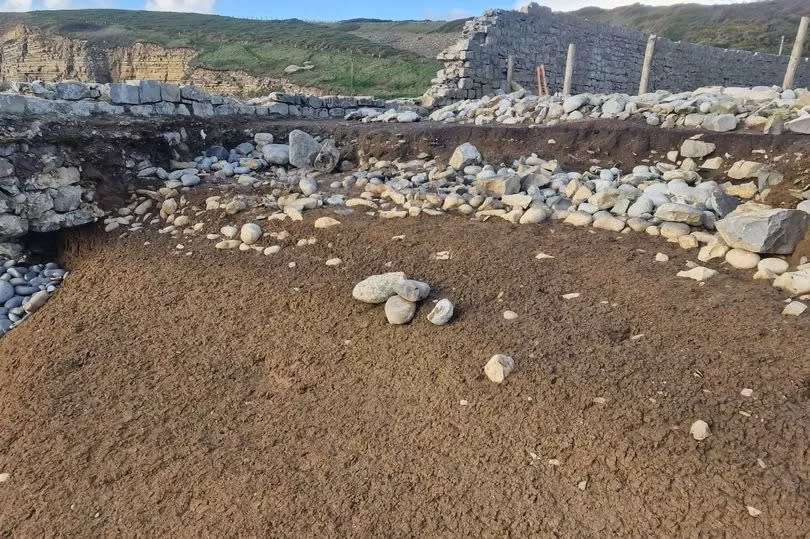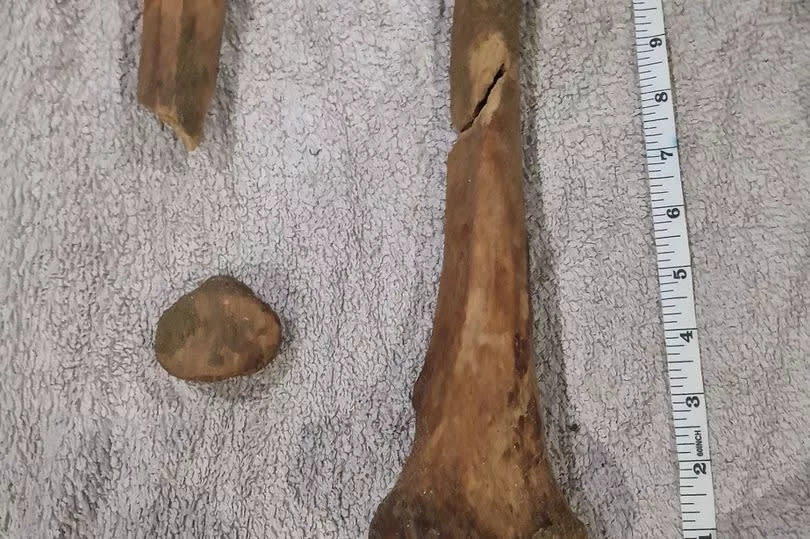Dad and son find bones on Welsh beach and take them home - then realise they're human

A father and son discovered what they initially believed to be animal bones on a Welsh beach, only to realise "in a panic" that they had actually stumbled upon human remains. Christopher Rees, 39, from Bridgend, along with his seven year old son Dylan, were walking their dog at Southerndown Beach also known as Dunraven Bay in the Vale of Glamorgan in October 2023.
The duo was searching for fossils, having previously found some in the same area. "We were looking and then I could just see part of a bone then sticking out of the ground," said Christopher, a carpenter by trade. "My son dug it up and he was excited - he thought he'd found a dinosaur. He was chuffed."
Located near a deteriorating ancient stone wall, once the boundary of the now-demolished Dunraven Castle (1963), the remains caught their attention. "I could see there was more there," Christopher said: "But I thought: 'I'm not digging anymore.' I thought it was large cattle, or something.", reports Wales Online.
READ MORE: Armed police descended on Llandudno street after reports of man with gun in a window
READ MORE: Inside former chapel converted into a stunning £550,000 home overlooking the Little Orme
They took the bones - a small circular one, along with two larger ones - home. "When we got home, the first thing my wife said was: 'That looks human.'" I started panicking then," said Christopher. After doing some research, he soon realised it was likely his wife was correct. "I thought I was going to be in trouble," he said. "I thought: 'Oh my God, should I go and put them back?'"

He phoned the police, who took the remains away for analysis. They confirmed the bones were thankfully not recently buried, but ancient human remains. "My son likes history and going to the museum. It's not everyday you find something like that. He's been well chuffed."
Police shut the Southerndown site for investigation and archaeologists also came to check out the discovery - but there was no further excavation, Christopher recalled. "Because there weren't more bones visibly sticking out of the ground, they said they weren't going to dig for any more - I found that surprising. We were a bit disappointed, because we thought we'd discovered something pretty interesting when we realised how old they were."

He said at the time he suspected more bones would come to the surface - and it appears his prediction was correct, as on Tuesday walkers stumbled across suspected human remains in the same area next to the ancient wall on the beach. The area has been cordoned off and is expected to remain closed for a few days, South Wales Police said. It's not yet been confirmed whether the remains are ancient, but the force said they are being sent for analysis.
These recent discoveries are not far from another beach where lots of historic human remains have been discovered. The skeletons of at least six individuals, thought to be victims of a shipwreck, were found in a cliff at Cwm Nash beach - also known as Monknash - in 2019 following an eight-day excavation by archaeologists. They were thought to date back to the late sixteenth or early seventeenth century.

Before that, in 2014, a beach walker stumbled upon the remains of an 800-year-old monk in Cwm Nash, with his legs protruding from a cliff. Mandy Ewington was enjoying a stroll along the seashore when she noticed two bones sticking out from the cliff face.
A human long-bone was also found at Cwm Nash in 1982, while part of a human skull was uncovered there in 1990 and three years later, excavations revealed three adults buried in an east-west line. The Royal Commission on the Ancient and Historical Monuments of Wales lists the Cwm Nash Burial Ground as an "]unofficial burial ground used by parishioners of Monknash".
A 2012 report by the Glamorgan Gwent Archaeological Trust suggested that the burials found on cliffs at Cwm Nash likely date from some time in the post-medieval period (1485-1901).
See what's happening in your area:

 Yahoo News
Yahoo News 
